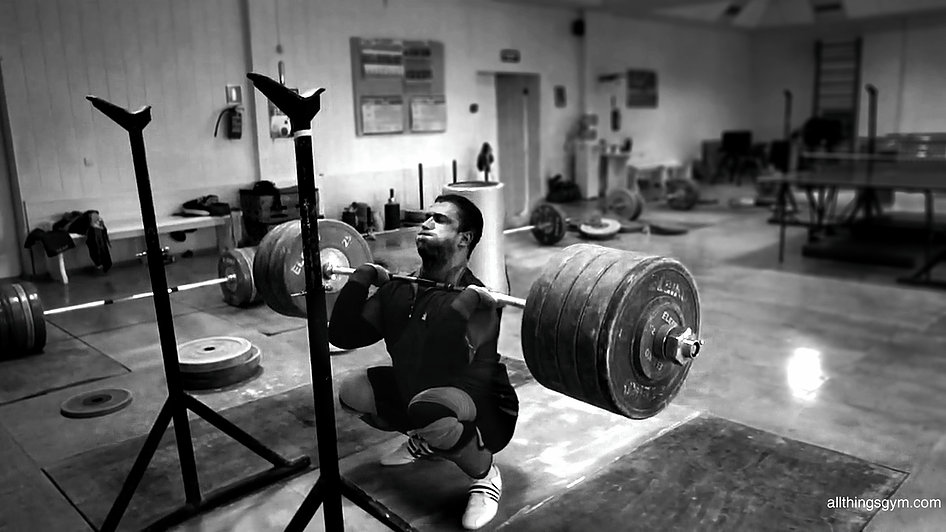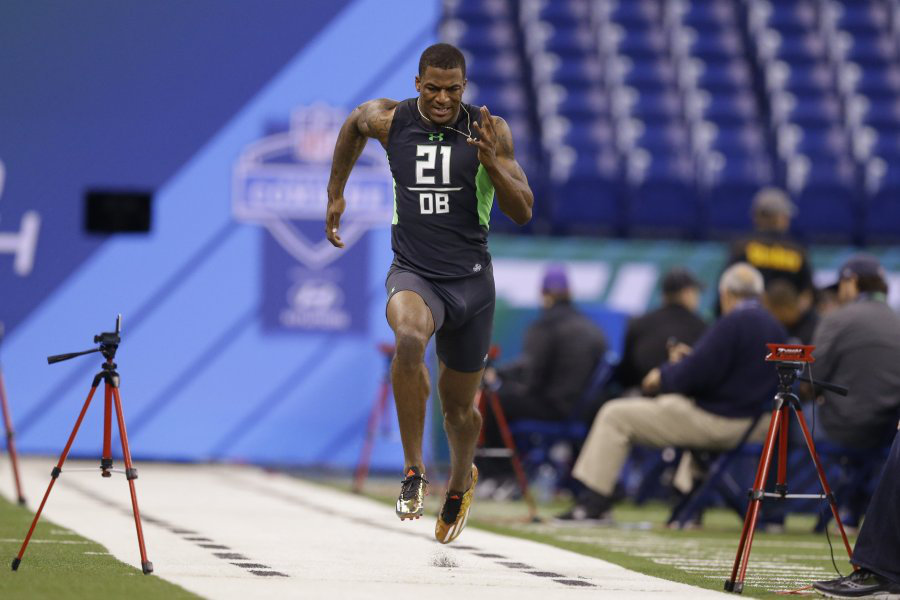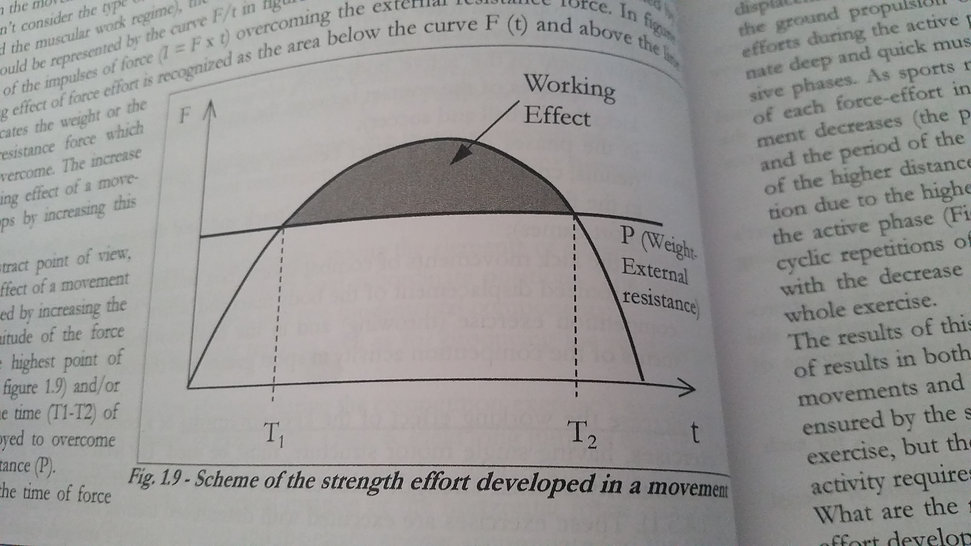To gain the truest understanding of why your coach or trainer specifies particular exercises, sets and reps at certain time across a training calendar year, we need to understand the physics at play and how these laws underpin athletic development. Not all of the principles and equations below may apply to your sport but understanding the application of these concepts will allow you to narrow down your exercise toolbox and provide greater direction to your training.
In this article, Logan Kramer, Mechanical Engineer, breaks down and defines the relevant principles and physics of the sporting arena. DIME Performance Head Coach, James de Lacey then provides practical examples of how these principles are applicable to your sport and training.
Force
Force in its purest physical form is any external influence or interaction that will change the motion of an object. Force is most commonly represented and defined by Newton’s Second Law:
 F=ma
F=ma
Where:
F=force (N)
m=Mass (kg)
a=Acceleration (ms-2)
To improve force output during training (and potentially during sporting movement), you can improve either side of the equation (mass or acceleration). For example, if you were to squat 100kg for 1 rep, you could add 5kgs and do 105kg for 1 rep. Therefore, improving force production. However, if you kept the weight at 100kg and moved the bar faster, then you have also increased force production.
The key takeaway message here is that, adding weight to the bar is not the only way to get stronger and produce more force. This is particularly useful for athletes who are competing weekly, where continually adding load may result in unwanted fatigue leading into competition.
Velocity
Velocity and speed a two terms quite often used interchangeably however their physical definitions are remarkably different.
Speed is a scalar quantity and refers to how fast an object is moving.
Average speed S=d/t
Where:
S= average speed (ms-1)
d=distance (m)
t=time (t)
 Velocity is a vector quantity and refers to the rate at which an object changes its position. The distinct difference between speed and velocity being, velocity has a “DIRECTION”.
Velocity is a vector quantity and refers to the rate at which an object changes its position. The distinct difference between speed and velocity being, velocity has a “DIRECTION”.
v= Δ position/t
Where:
v= average velocity (ms-1)
Δ =displacement (m)
t=time (t)
As discussed above, velocity has a direction. To become a faster and better sprinter, we must tailor and focus our training to occur in the horizontal direction where force, velocity and power are applied. If you want to jump higher, your training needs to specifically focus on the vertical direction where force, velocity and power are applied.
Mass
Similar to the previous example, mass and weight are two very commonly confused terms. The two words are used almost interchangeably in everyday life, however their physical and scientific definitions are different.
Mass is a measure of the quantity of matter in an object, regardless of the objects volume or the forces acting upon it. Mass is always constant and gravity has no effect on it.
Mass is expressed in kilogram (kg).
Weight is a measure of the gravitational force acting upon an object. The weight of an object is dependent specifically on the gravity of that place.
Weight is expressed in Newton (N).
It is important to understand and remember the majority of your bodies mass should be muscle mass. Fat mass rarely plays a beneficial role in sport, unless there are sumo wrestlers reading this. The leaner you are, the greater your muscle mass is per kilogram of bodyweight. Meaning you can potentially produce greater force and power outputs per unit of mass, AKA relative strength and power.
Momentum
The term momentum is defined as the “quantity of motion an object has”. Momentum can be thought of as an objects resistance to stopping.
P=mv
Where:
P= Momentum (kg.ms-1)
m=mass (kg)
v=velocity (ms-1)
From the above definition it becomes very clear, that an object or player with a large mass travelling with a fast velocity, will have a very high momentum and will take a lot to stop. This is crucially important to collision based sports (e.g. rugby) where the greater the momentum of the player, the harder it is to tackle or to stop the player.
In a sporting context, ideally you want to be as big as possible (mass) and as fast as possible (speed) depending on your position (See momentum in action below). To be big and fast, speed training must be performed regularly along with your strength/hypertrophy work where training volumes of each will be dictated by the season you are in.
Watch this to see momentum in action. Get your ice packs ready.
Impulse
Impulse is defined as the product of the force acting on a body and the time interval during which the force is exerted.
J=F Δt
Where:
J= Impulse (kg.ms-1)
F=force (N)
t=time (s)
The concept of impulse is simply an extension of Newton’s Second Law that we discussed earlier in the Force section. The subject of Impulse applied to sport and the human body becomes particularly interesting when we investigate and study the different forces sustained by the body during activity. By simply modifying technique speed, we can manipulate the forces that act upon the body or the body applies to an object. This application combined with the conservation of momentum is highly relevant for impact sports in order to analyse the forces in collisions.
The picture below taken from Verkhoshanksy’s book [1], gives a good illustration of impulse. The x axis represents time while the y axis represents force. The two products of Impulse. According to Verkhoshanksy, “the working effect is determined by the amplitude of the impulses of force overcoming the external resistance force (could be bodyweight, external opposition or external implement such as a shotput).” An increase in the working effect requires increasing maximal force output and/or increasing time (T1-T2 in the diagram below) of the force generated to overcome the external resistance (P). However, when training for the sporting arena, increasing time to produce force in the impulse equation isn’t ideal as velocity of the movement would have to decrease to allow for the increase in time. This goes against the nature of sporting movement as time in sport is typically short in nature (e.g. sprinting ground contact times, reducing velocity of a player during a tackle). Not only this, sporting movements require maximum speed! Therefore, athletes need to learn to produce maximum force per unit time (making the working effect curve steeper). This is where power training methods become relevant, such as plyometric exercises.

Impulse illustrated for you visual thinkers
Power
Power in it’s simplest form is defined as the product of force acting on a body and the velocity of that force.
P=Fv
Where:
P= Power (W)
F=force (N)
v=velocity (ms-1)
This equation reveals that a powerful athlete or person is one that can generate large forces and apply these at fast velocities. This could be sprinting, tackling, jumping, throwing among many other explosive sporting movements. Improving either variable, force and/or velocity, in the power equation will result in increased power output.
We are now able to create a power-force-velocity profile through a simple app called MyJump. Put very simply, this profile determines whether your force or velocity needs to be improved in order to optimally improve power output, removing all the guess work. However, in short, train to produce greater force and then develop the ability to produce that force very quickly in a particular movement.
Hopefully this article has shed some light on simple physics equations that relate to sport and how they can be applied to your training. If you can wrap your head around these concepts, planning your own training or even interpreting the training your coach has given you will help you understand the qualities being developed in each cycle
